What is Zoom Translation and How Does It Work?
March 28, 2025
March 28, 2025
October 6, 2025
October 6, 2025
Language barriers can make virtual meetings challenging, especially when participants speak different languages. Luckily, the Zoom translation feature helps by providing real-time translated captions so everyone can follow along more easily.
Zoom’s translated captions display spoken content in another language to help participants stay engaged without missing key details.
This guide covers how Zoom live translation works, supported languages, setup instructions, and how to improve translation accuracy.
What is Zoom Translation Feature?
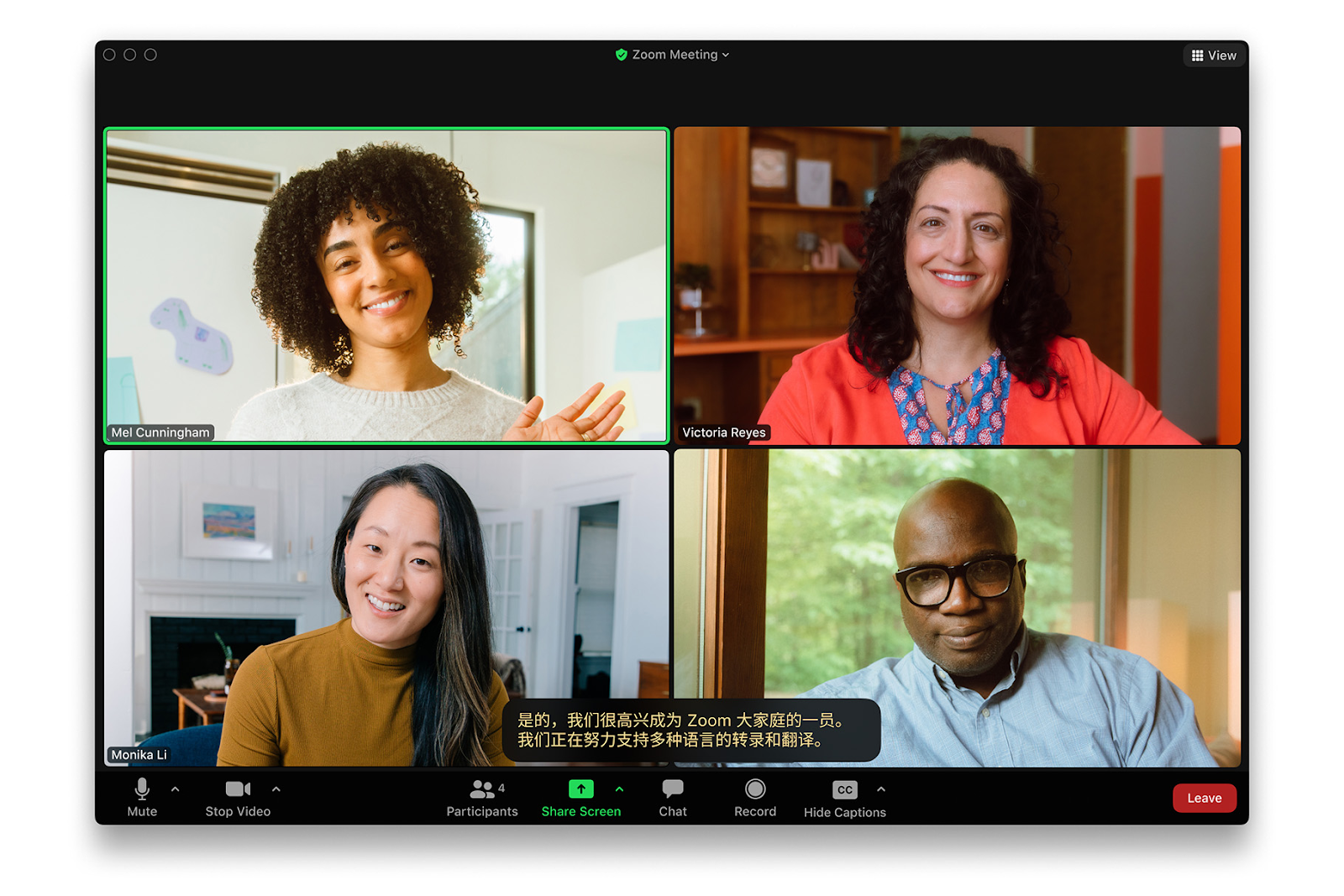
Zoom’s meeting translator provides real-time translated captions during a Zoom meeting or webinar. When a speaker talks, their speech is automatically converted into captions in another language.
The meeting host selects which languages are available before the session, but participants can choose their preferred language during the meeting. This makes it easier for international teams and event attendees to communicate without needing a live interpreter.
You can also learn about Zoom AI Companion, which offers additional AI-powered features, including automated meeting summaries and other tools.
Supported Languages for Translated Captions
Zoom supports translated captions for the following languages:
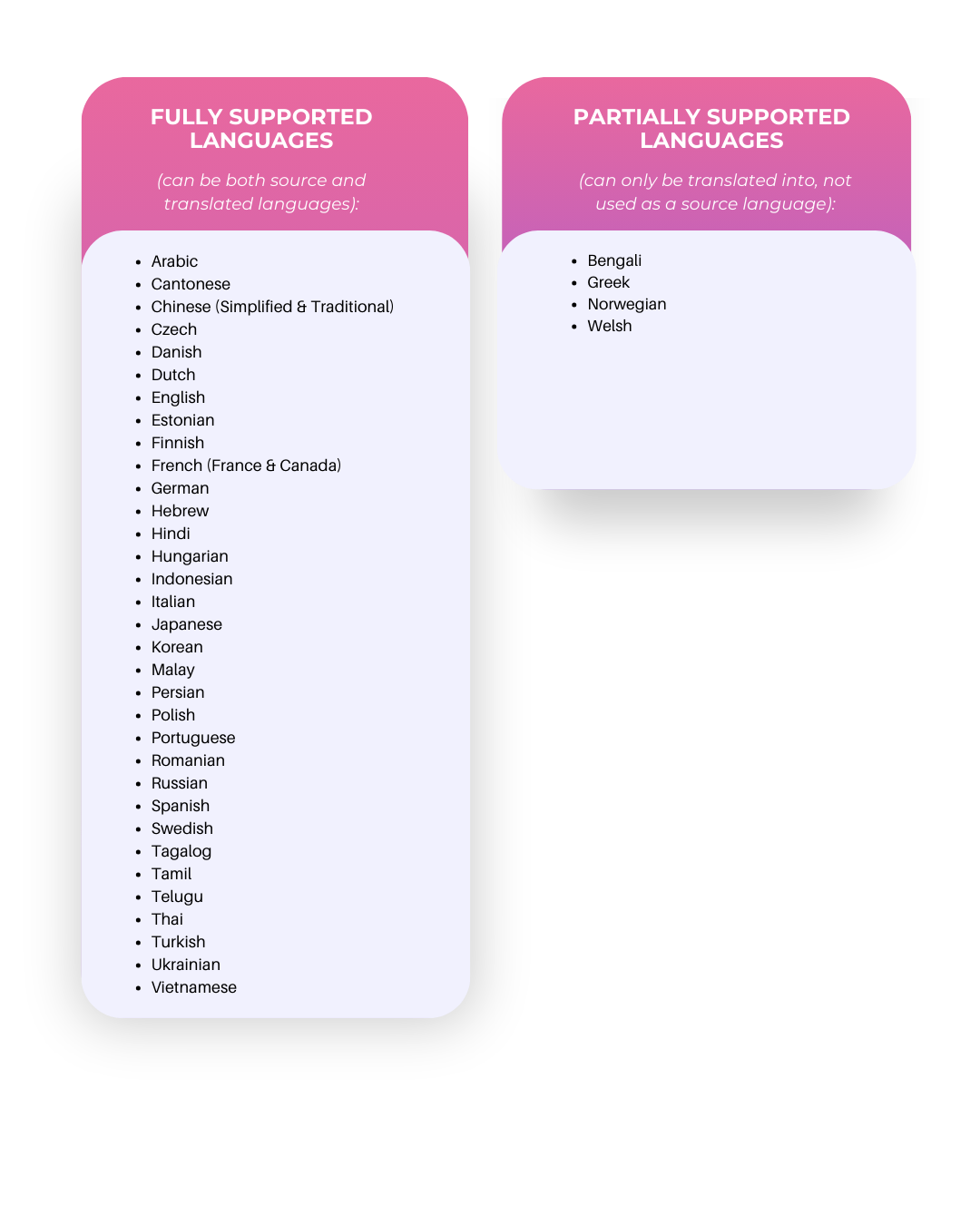
Zoom Translate Add-On Cost

The Zoom Translated Captions feature is available with specific Zoom plans or as an add-on. To access translated captions, users must have:
- A Zoom Workplace Business Plus or Zoom Workplace Enterprise Plus account
- OR the Zoom Translated Captions add-on, available for $5 per month per user
This feature is already included in certain plans. However, pricing may vary based on organization size and needs. For the most up-to-date pricing, contact Zoom Sales directly.
How to Enable Translated Captions
Zoom allows admins and users to enable translated captions at different levels: account, group, or user level. The process varies depending on whether you want to apply settings for an entire organization or just for yourself.
Enable Translated Captions at the Account Level
Admins can enable translated captions for all users in their organization.
- Sign in to the Zoom web portal as an admin with permission to edit account settings.
- In the navigation menu, click Account Management, then Account Settings.
- Click the Meeting tab.
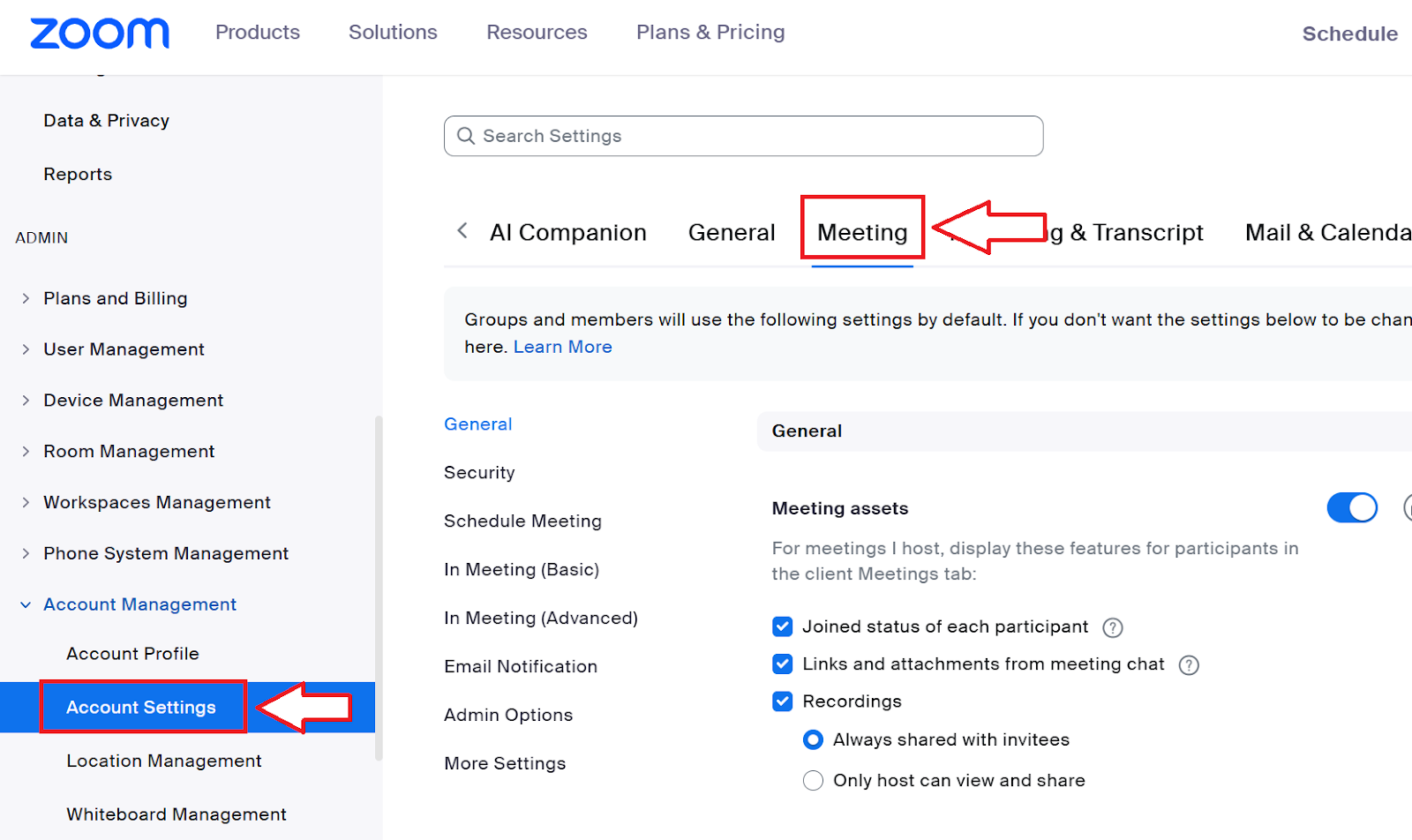
- Under the tab “In Meeting (Advanced)”, find the translated captions toggle and click to enable translated captions.
- If a verification dialog appears, click Enable to confirm.
- Ensure that automated captions are also enabled.
- (Optional) Click Edit translation languages to configure language pairs for the account.
- (Optional) To prevent users from changing this setting, click the lock icon, then Lock to apply the change.
Enable Translated Captions at the Group Level
Admins can apply translated captions to a specific group of users.
- Sign in to the Zoom web portal as an admin with permission to edit groups.
- In the navigation menu, click User Management, then Group Management.
- Select the group name from the list.
- Click the Meeting tab.
- Under In Meeting (Advanced), find the translated captions toggle and enable it.
- If a verification dialog appears, click Enable to confirm.
- Ensure that automated captions are also enabled.
- (Optional) Click Edit translation languages to configure language pairs for this group.
- (Optional) Click the lock icon to prevent users in the group from modifying this setting.
Enable Translated Captions at the User Level
Individual users can enable translated captions for their own meetings.
- Sign in to the Zoom web portal.
- In the navigation panel, click Settings.
- Click the Meeting tab.
- Under In Meeting (Advanced), find the translated captions toggle and enable it.
- If a verification dialog appears, click Enable to confirm.
- Ensure that automated captions are also enabled.
- (Optional) Click Edit translation languages to configure your preferred language pairs.
If this option is grayed out, it may have been locked by an admin at the group or account level. In this case, contact your Zoom admin for assistance.
What is a Language Pair?
A language pair in Zoom’s translation feature consists of:
- A speaking language (the language spoken during the meeting)
- A translated caption language (the language displayed in captions)
For example, if a presenter speaks English, but attendees are from Spain, China, and Ukraine, the host can set Spanish, Chinese, and Ukrainian as translated caption languages. This allows participants to view captions in their preferred language without needing a live interpreter.
How to Edit Translation Languages
By default, all supported language pairs are enabled, but hosts can customize them:
- Enable translated captions in Zoom settings.
- Click Edit translation languages to open the settings window.
- (Optional) Check Select all language pairs to enable every available option.
- Under Speaking Language, check the box next to each language you want to allow as an input language.
- In the Translate to column, select the languages you want available for captions.
- Click Save to confirm your selections.
This customization ensures that only relevant language pairs are available during the Zoom meeting or webinar.
When to Use Zoom Translation Features
Here are some ideal situations to use Zoom’s translated captions
Town Halls or Company-Wide Calls
In organizations with diverse language backgrounds, translated captions ensure that all employees comprehend the information shared during meetings. This promotes inclusivity and ensures that language differences do not hinder understanding.
International Team Meetings
In multilingual teams, language barriers can hinder communication and lead to misunderstandings. Translated captions allow team members to follow discussions in their preferred language, keeping everyone aligned on key decisions.
In his YouTube channel, Enrico Zamparo tested Zoom’s translated captions during a training session and found that features like real-time language selection, dual-view captions, and a full transcript log made the session more inclusive and accessible.
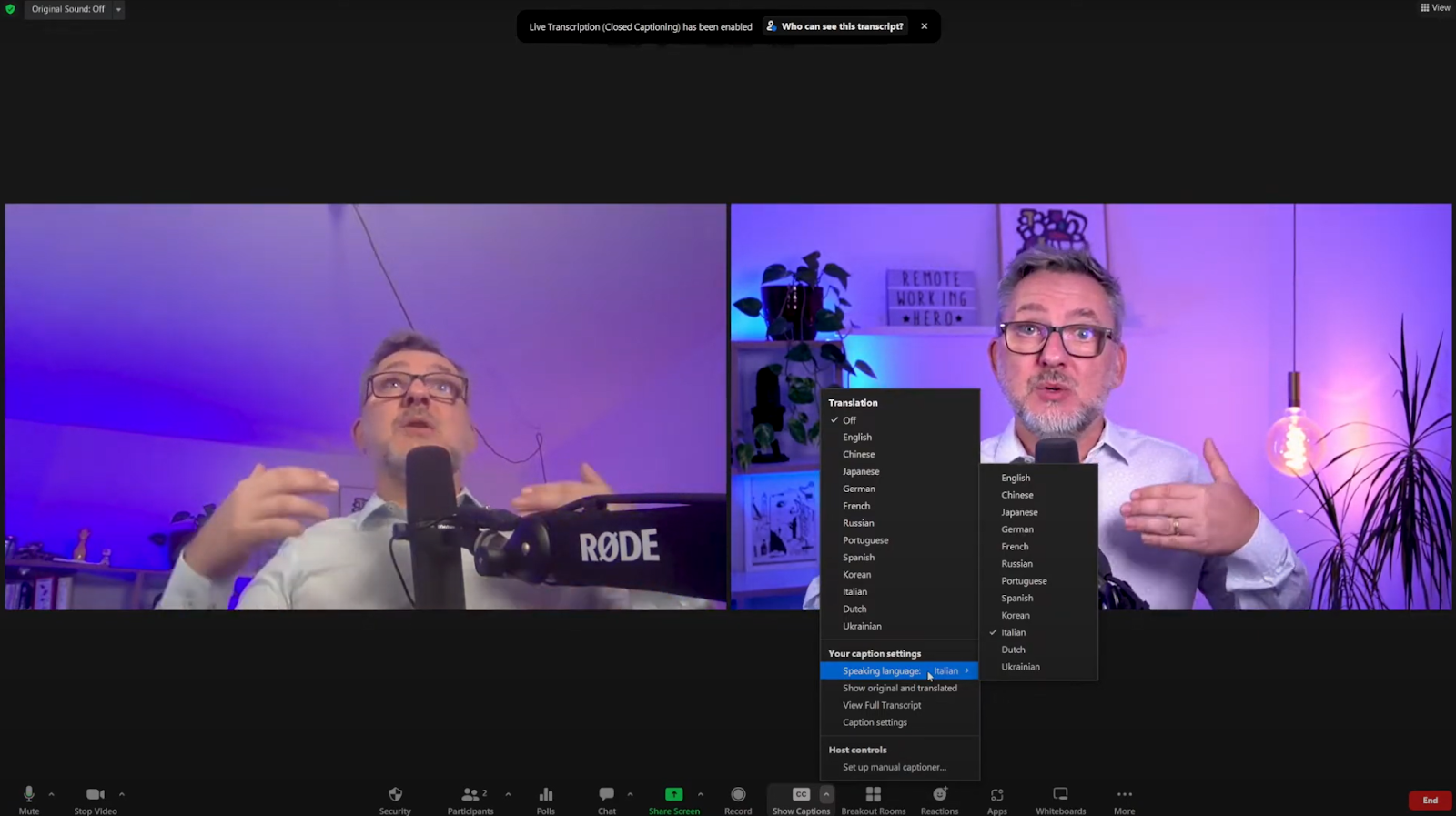
You can view the full video below:
Global Webinars or Events
When hosting webinars or events with an international audience, providing translated captions can improve the accessibility and reach of your content. Participants can select their preferred language for captions to make the event more engaging and accommodating to a global audience.
For a visual demonstration of how Zoom's translated captions work, you can watch the following video:
Practical Tips for Better Translation Quality
Zoom’s translated captions can improve accessibility, but accuracy depends on factors like speech clarity and language complexity. Here are some practical tips to improve translation quality during a Zoom meeting or webinar.
Speak Clearly and Slowly
Fast or unclear speech can lead to inaccurate translations. Here’s how to improve caption quality:
- Speak at a moderate pace to give the system time to process words accurately.
- Enunciate words clearly, avoiding mumbling or talking over others.
- If multiple people are speaking, use the audio channel feature to reduce background noise.
Avoid Jargon and Idioms
The Zoom translate feature struggles with technical jargon, regional slang, and idioms. Keep communication simple by:
- Using clear, standard vocabulary that translates well across multiple languages.
- Replacing idioms with literal explanations (e.g., instead of “hit the ground running,” say “start immediately”).
Run a Brief Test Session Before the Actual Meeting
To avoid translation issues during important meetings:
- Schedule a short test session before the actual event.
- Have a participant enable translated captions and verify accuracy.
- Adjust caption languages and test different speaking languages to ensure a smooth experience.
With these steps, you can minimize translation errors and make your Zoom meeting or webinar more inclusive for all participants.
{{rt_cta_ai-convenience}}
How to Get a Translated Transcript with Tactiq
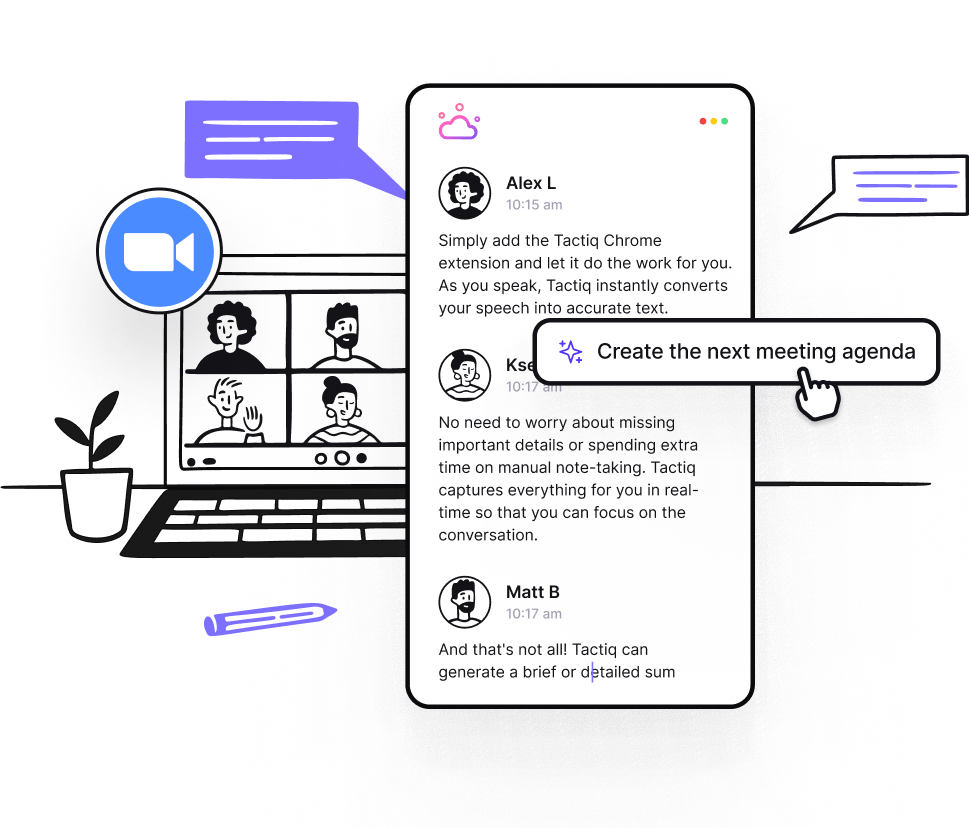
Zoom allows users to download meeting transcripts, but these transcripts are only available if the meeting was recorded to the cloud and audio transcription was enabled beforehand. The downloaded transcript is usually in VTT format.
Why Use Tactiq’s Zoom AI Transcription Tool?
While Zoom provides basic transcription, Tactiq has additional features that make transcripts more useful for multilingual teams.
- Live Transcription Without Recording – Tactiq generates real-time captions without requiring cloud recording.
- AI-Powered Translation – Instantly translate transcripts into multiple languages, making it easier for global teams to review key discussions.
- Speaker Identification – Unlike Zoom’s default transcript, Tactiq identifies who said what to provide more clarity in conversations.
- Download in Multiple Formats – Save transcripts in TXT or PDF formats for easy sharing and video subtitling.
- Customizable AI Summaries – Use AI to extract key points, action items, and insights from the transcript automatically.
Supported Languages for Translation in Tactiq
Tactiq allows users to translate transcripts into 50+ languages, including:
- English
- Spanish
- French
- German
- Portuguese
- Italian
- Dutch
- Russian
- Chinese (Simplified & Traditional)
- Japanese
- Korean
- Arabic
- And more
If your team needs more than just a transcript, Tactiq provides AI-powered features that go beyond Zoom’s built-in capabilities. Download the free Tactiq Chrome Extension today!
Making Zoom Meetings Work for You
Zoom’s translated captions break down language barriers during virtual meetings. Whether you're hosting global webinars, international team meetings, or company-wide calls, this feature ensures participants can follow along in their preferred language.
While Zoom provides basic translation and transcription, tools like Tactiq offer more advanced features, including real-time AI-powered translation, speaker identification, and downloadable transcripts in multiple formats. This makes it easier to review, share, and act on meeting discussions across different languages.
If you regularly hold multilingual meetings, combining Zoom’s translated captions with a tool like Tactiq can enhance accuracy, accessibility, and collaboration for your team.
Yes. Zoom’s translated captions provide real-time speech-to-text translation during a Zoom meeting or webinar. Participants can choose their preferred language from the available options set by the host.
Zoom’s translation accuracy varies based on speech clarity, background noise, and language complexity. While it works well for simple conversations, technical jargon and idioms may not translate correctly. Some users report inconsistencies in translations.
Yes. Once the host enables translated captions, participants can select their preferred language from the caption languages available in the meeting settings.
Zoom does not save translated captions automatically, but you can download a meeting transcript if the session was recorded to the cloud. For translated transcripts, tools like Tactiq offer real-time transcription, translation, and downloadable transcripts.
You may not see translated captions if your account lacks the Zoom Translated Captions add-on or a Business Plus/Enterprise Plus plan. An admin may need to enable it in account settings, and some regulated industries like Healthcare and Higher Education may have restrictions.
Want the convenience of AI summaries?
Try Tactiq for your upcoming meeting.
Want the convenience of AI summaries?
Try Tactiq for your upcoming meeting.
Want the convenience of AI summaries?
Try Tactiq for your upcoming meeting.









